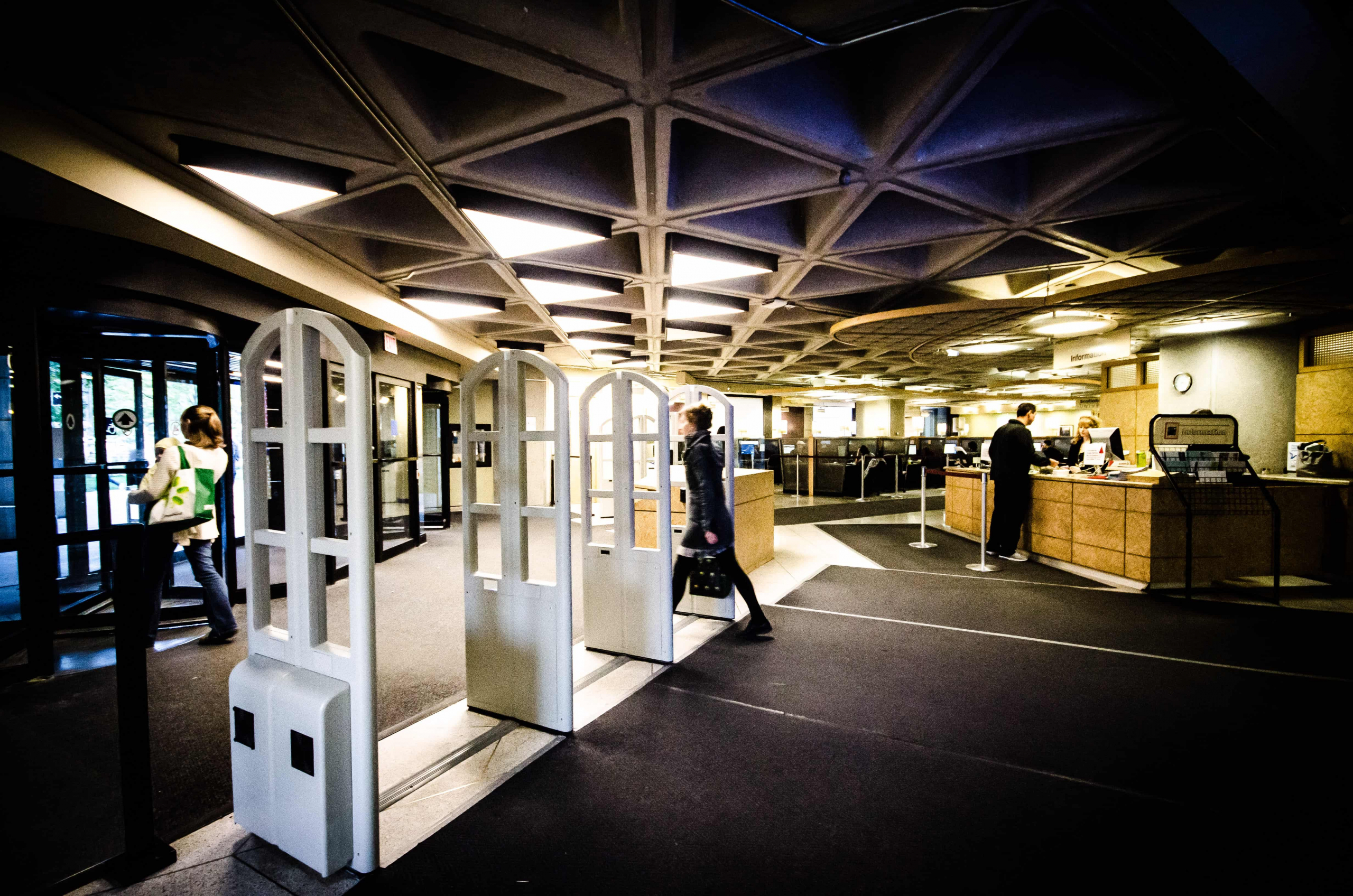Following a series of incidents and arrests in recent months, the University of Toronto library system is implementing a host of new measures to improve security, including improved equipment and expanded CCTV surveillance.
Security guards and a handful of desk staff have been outfitted with new, more powerful radios. “Cellphones don’t work in areas of the building because it was built out of steel and concrete and signals are blocked. This is true of the radios as well,” chief librarian Larry Alford explains. “But we recently bought some more powerful ones so that the guards can have immediate contact with the police, and not have to go somewhere where they can get a signal.”
While Robarts already had numerous cameras positioned throughout the 14-storey building, there remain some portions of the building out-of-view on CCTV coverage. The library is currently in the design stage of a plan to add more cameras, particularly in the stacks.
“We’re actually using campus experts to really look at how can we best place additional surveillance cameras to act as a deterrent,” says Alford, adding that additional cameras could help resolve issues when and if they do occur.
The cameras are expected to be installed by this winter.
Perhaps the most drastic proposal under consideration is a plan to limit access to Robarts to T-Card holders and registered guests.
“I have put together a small task force to make some recommendations on whether we should actually limit access to Robarts Library to people with U of T IDs and registered guests — but guests would actually have to register and get permission to come into the building,” says Alford.
There are significant difficulties with limiting access to the building. Robarts is not only home to the library stacks, but also to academic departments such as the Department of East Asian Studies, to which non-ID holders may need access.
The building also houses the Toronto offices of Statistics Canada. “Legally, we must make government documents available to everybody, not just U of T students,” says Alford. Robarts also has collections that must be made available to the public if there was a tax receipt given for them by the Canadian Export Review Board.
Alford says that the group is considering the practicality of the move: cost, impact on staff and students, and the experiences of other schools such as NYU, which has limited access to the central Bobst Library, broadly the equivalent of Robarts at U of T.
“There would probably be long lines to get into the building, because you would have to check all of the IDs,” Alford acknowledges. “On a heavy day, this building gets used by 18,000 people.”
Before undertaking any measures to introduce new choke points to U of T’s largest library, Alford promises extensive consultations with student groups, the library advisory committee, and any other groups who may be impacted.
“We would talk extensively to the community before we actually did anything,” said Alford. Because it would have an impact on staff and students, both positive and negative, we want to make sure that they are well-aware of anything that we would be doing.”


